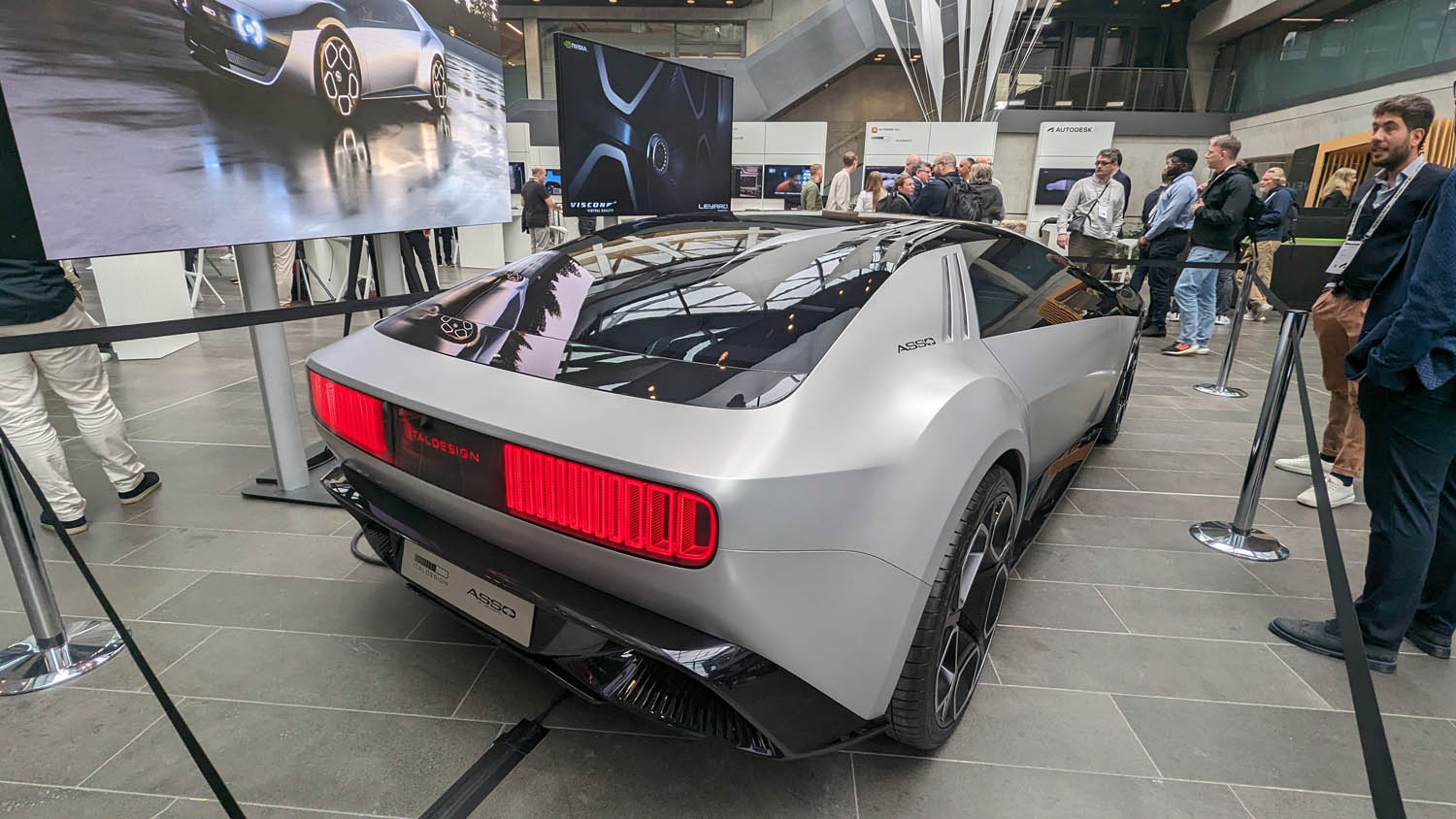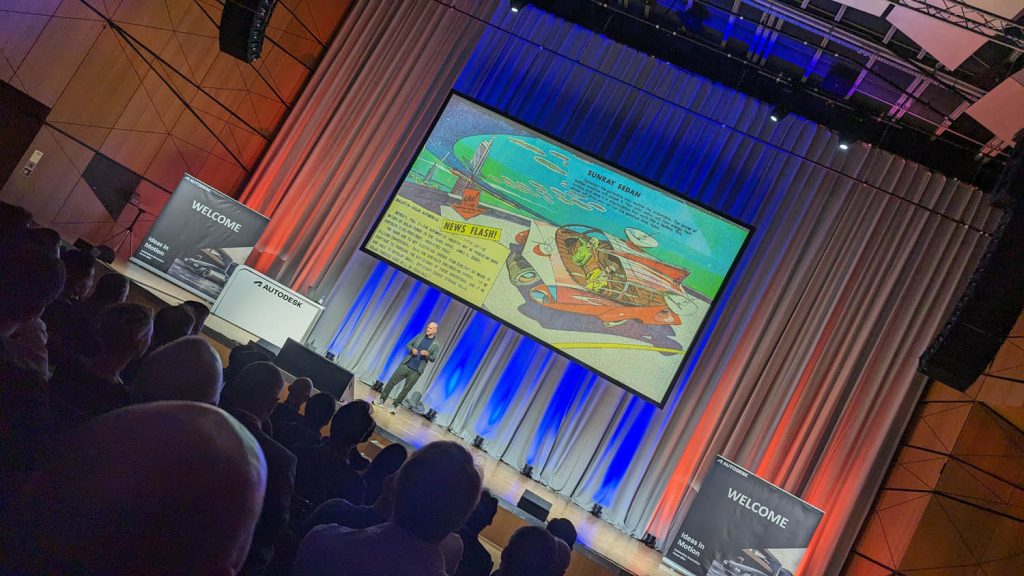AI is everywhere in product development right now and took centre stage at the Autodesk Automotive Innovation Forum 2024, as Andy Shaw reports from the event held in Darmstadt, Germany in May
The tools we use on a day-to-day basis are undergoing huge changes with the adoption of AI. So when I attended the Autodesk Automotive Innovation Forum 2024, I was keen to see how the company plans to navigate the opportunities that AI presents. This promised to be an intriguing event.
After all, managing design programmes and deploying new vehicles for our clients, both OEMs and start-up companies, is our studio’s bread and butter. At Vital Auto, any new software (or indeed, hardware) developments that promise us a competitive advantage are worth further investigation. With this in mind, I was keen to see what Autodesk has planned.
The event is an opportunity for Autodesk to showcase its latest technologies and was taking place in downtown Darmstadt, a German city about 30 minutes south of Frankfurt and a well-established hub of automotive manufacturing. As a consequence, it’s home to many local design studios that work for large OEMs including KIA, Opel and Chery, among others.
One of the most important functions of the event for Autodesk is to get user feedback on its new introductions and future plans, a process that is ongoing over the two days. The upside for attendees, meanwhile, is the opportunity to get stuck into software features with the experts, to learn about best-in-class workflows and, perhaps most importantly, to network with their peers and share a drink or two.
Making bets on AI
The relaxed atmosphere of the Autodesk Automotive Innovation Forum enabled us to get straight into the flow of things, which kicked off with an impressive keynote from Maks Giordano, a corporate advisor on the topic of generative AI.
Giordano’s presentation really set the tone for the event. The range of AI tools discussed and detailed deserves a deeper dive, but the main takeaway for me was that Autodesk seems to be making a series of bets based on investigating the potential of neural network-enhanced functionality within the software (Alias and VRED), as well as supporting research projects with automotive OEMs such as KIA.
I am sure that I wasn’t the only person to suggest that some of the menial tasks we regularly perform – such as flipping surface normals – could be AI-powered in the future. That’s maybe not as exciting as 3D form generation, but it would surely be a time-zapping solution.
In conversation with Thomas Heermann, vice president for Alias and VRED at Autodesk, and director of product development Marek Trawny, I asked how AI research programmes can be run alongside traditional programmes when advances in AI technology happen at such a breakneck speed?
Their answer was that they have established an internal AI think tank that is agile enough to make decisions quickly. This is coupled with customer feedback and workshop sessions, which help keep the team focused.
A good answer, but it left me with further questions. For example, how can Autodesk guide smaller companies through the rapid changes brought about by emerging AI tools, and what can be done to bridge the gaps in workflow between traditional and AI tools?

Navigating the Wild West
In many ways, AI feels like the Wild West. And no single software creator – including Autodesk – can yet offer designers the most proficient, or indeed adaptable, workflow.
It should be noted that, individually, certain previously elaborate cross-programme functions such as Sub-D modelling are going from strength to strength within Alias. That’s boosting productivity, thanks to the thought that has clearly been paid to the contextual use of the tool. It’s evident, for example, in elements such as mesh modelling while generating NURBS output geometry.
However, some of the more creative tools seem misplaced on a CAD screen, feeling more at home on the tip of a biro. And some of the detailed engineering functions that are now appearing in VRED seem to be targeted at Class A surfaces and visualisation teams, who may not be best-placed to act on the engineering tolerance guidance provided.
Just because we as designers ask for a clever feature in the software does not always mean that we should be given it. This isn’t an Autodesk issue, but rather a wider design issue
In fact, there are so many functions in Alias today that one of the most often-used tools in the set is actually the ‘tool finder’ function. I kid you not.
Just because we as designers ask for a clever feature in the software does not always mean that we should be given it. This isn’t an Autodesk issue, but rather a wider design issue.
Many software vendors seem to push the idea that the entirety of the design process should be digital – but ultimately, a designed product will exist in the real world (usually). As a result, delaying physical realisation until much later in the process, deleting clay and snapshot models (which are not that expensive when compared to the required digital manpower and licensing costs) may be risky. After all, as we get closer to production deadlines, the freedom to make changes steadily dissolves.
On a more optimistic note, it feels like we designers are increasingly empowered to find our own way in all of this, and that Autodesk is willing to listen and act. In the time that’s passed since the early May event, we’ve seen the release of a new multimodal version of OpenAI’s ChatGPT, which at this rate, may further displace the whole design ecosystem rather quickly.
Being able to navigate AI tools and reap its benefits across different platforms may be a necessity for any designer in the coming months.
Either way, this is a hugely exciting time to be involved in the design industry. I’m already keen to see what developments the Autodesk team will bring to next year’s event and how impossibly far beyond today’s trajectory we will have taken our workflows.
About the author:
Andy Shaw is director and co-founder at Vital Auto, a global leader in physical and digital automotive prototyping based in Coventry, UK.
From design programmes to prototype vehicles and engineering deployment, Vital works discreetly with OEMs and start-ups to develop new vehicles. Shaw holds an MA in Automotive & Transport Design from Umeå University in Sweden.
This article first appeared in DEVELOP3D Magazine
DEVELOP3D is a publication dedicated to product design + development, from concept to manufacture and the technologies behind it all.
To receive the physical publication or digital issue free, as well as exclusive news and offers, subscribe to DEVELOP3D Magazine here






